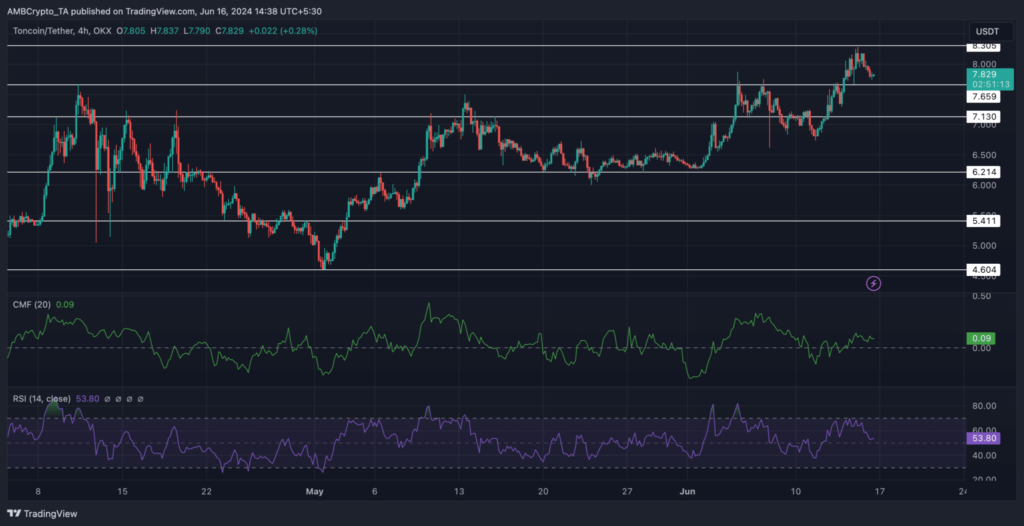With its explosive expansion, the Toncoin (TON) network has unexpectedly become a major participant in the cryptocurrency market, attracting the interest of both investors and analysts equally.
TON recently reached an all-time high (ATH) of $7.3, therefore attesting to a major network milestone. Following this peak, though, the price corrected by 4.79%.
Given TON’s general growth path, this temporary fix seems somewhat insignificant even if it could seem significant. The price of TON has showed a strong rising trend since May 1st, marked by a sequence of higher highs and lower lows, therefore indicating continuous optimistic momentum.
Toncoin’s Optimistic Market Activity
The Chaikin Money Flow (CMF) indicator for TON shows a continuous influx of money into the network even with the recent price fall. The Relative Strength Index (RSI) dropped noticeably at the same time, implying a lack of momentum, however it kept over the vital 50 mark. This stay over 50 implies that TON’s market activity still reflects optimistic attitude.

Close observation of TON’s future performance will help us to determine whether it can exceed its present ATH. The recent changes in the network and strategic alliances help to greatly encourage possible expansion. It has been revolutionary to include Tether (USDT) into the Toncoin ecology in April.
With the USDT supply rising to $580 million—a stunning 76% rise in a month—this action has greatly strengthened TON’s ecosystem.Toncoin is now the sixth most used network for USDT circulation thanks to this increase in USDT, therefore highlighting its increasing relevance in the stablecoin market.
Furthermore, user engagement in the TON network has skyrocketed. Rising by three hundred percent, daily active users now hold an all-time high of 632,000. This increase in user involvement is evidence of the network’s ever-growing attractiveness and simplicity.

Driving acceptance and use of the TON network is mostly dependent on the existence of a stablecoin such as USDT, exactly linked to the US dollar. Future developments of more sophisticated developer tools and EVM-compatible Layer 2 solutions are projected to quicken this trend of expansion.







